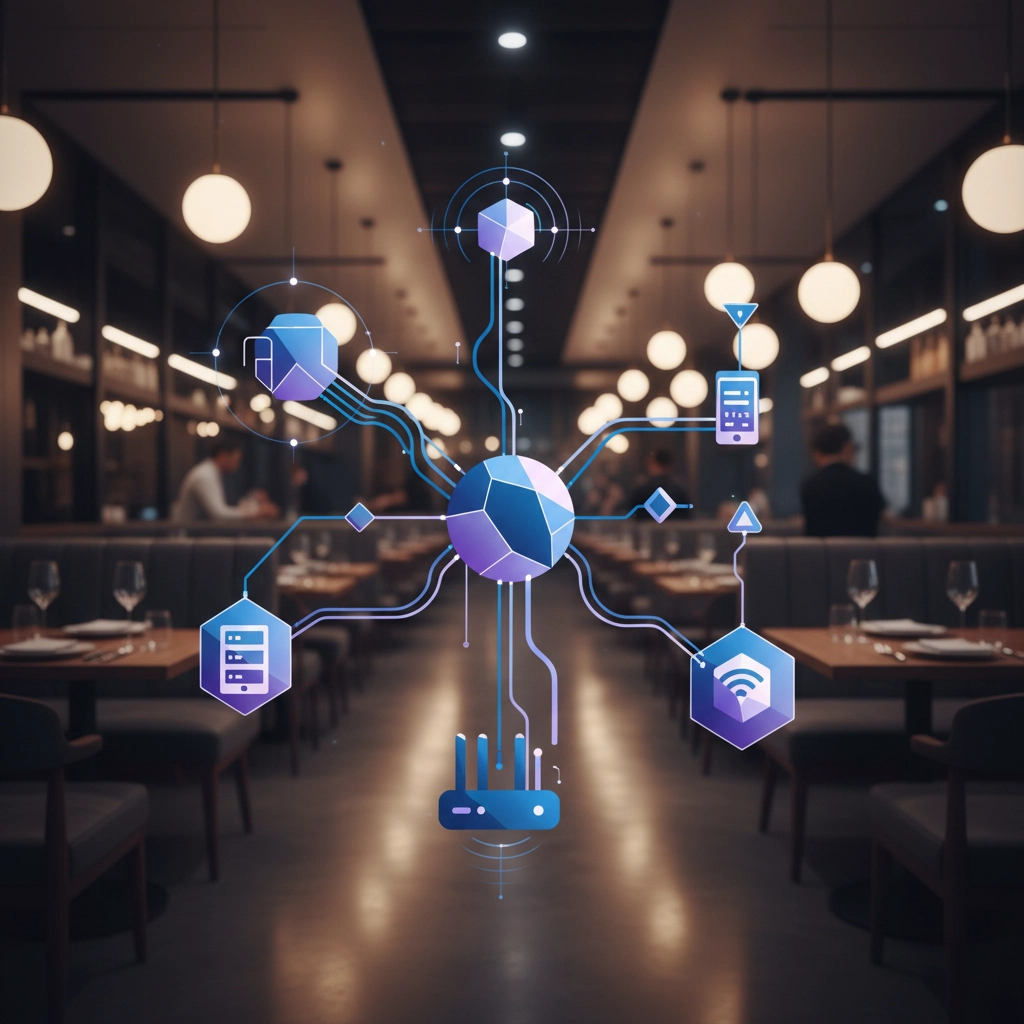Running a successful restaurant isn't just about great food anymore: it's about having the right technology backbone to support your operations, especially as you grow. Whether you're opening your second location or planning to triple your customer capacity, the IT hardware decisions you make today will either fuel your growth or hold you back.
Let's break down the essential tech hardware every growing restaurant needs, without getting bogged down in technical jargon or overwhelming specifications.
Start With Your Point of Sale (POS) System
Your POS system is the nerve center of your restaurant operations, so getting the hardware right is crucial. Modern restaurant POS hardware goes way beyond those clunky old cash registers: we're talking about sleek terminals, wireless tablets, and integrated payment processing that can handle everything from splitting bills to managing inventory.
POS Terminals and Tablets: Look for hardware that can handle high-volume transactions during rush periods. iPad-based systems are popular because they're intuitive for staff to learn, but dedicated POS terminals often offer better durability for heavy use. Consider how many stations you'll need: one for the host stand, multiple for servers, and at least one backup during maintenance.
Payment Processing Hardware: Integrated card readers that handle chip, tap, and mobile payments are non-negotiable in 2025. Make sure your hardware supports all payment methods your customers expect, including digital wallets like Apple Pay and Google Pay. Wireless payment terminals let servers process payments tableside, speeding up table turnover.

Kitchen Display Systems (KDS): Replace those paper tickets with digital displays that integrate with your POS. Kitchen staff can mark orders complete, track timing, and communicate with front-of-house staff through the system. Choose waterproof, heat-resistant displays that can handle the kitchen environment.
Build a Rock-Solid Network Infrastructure
Nothing kills the restaurant experience faster than a crashed network during dinner rush. Your entire operation depends on reliable connectivity, from processing payments to managing orders.
Commercial-Grade Routers and Access Points: Consumer-grade equipment won't cut it in a busy restaurant environment. Invest in enterprise-level networking hardware that can handle dozens of connected devices simultaneously: POS terminals, tablets, kitchen displays, security cameras, and customer Wi-Fi.
Wired Backbone: While Wi-Fi is convenient, run ethernet cables to fixed stations like POS terminals and kitchen displays for the most reliable connections. Wireless should supplement, not replace, wired connections for critical systems.
Guest Wi-Fi Separation: Set up separate networks for operations and customer access. This protects your business systems while still offering free Wi-Fi as a customer amenity. Consider bandwidth management to prevent customer usage from slowing down your business operations.
Smart Hardware for Front-of-House Operations
Handheld Devices for Servers: Tablets or dedicated handheld POS devices let servers take orders and process payments anywhere in your restaurant. Look for devices with long battery life, sturdy cases, and fast processors that won't lag during busy periods.
Digital Menu Boards: LED displays for menus are easier to update than traditional printed boards and can showcase daily specials or promotional items. Choose displays with good visibility in various lighting conditions and easy content management systems.
Customer-Facing Displays: Payment terminals with customer-facing screens for tip selection and receipt options create a smoother checkout experience and can increase average tips.

Kitchen Technology That Actually Works
Order Management Hardware: Beyond kitchen display systems, consider bump bars, expediting stations, and timer systems that help kitchen staff manage order flow efficiently. Hardware that integrates with your POS ensures orders flow seamlessly from server to kitchen.
Temperature Monitoring Systems: Automated temperature logging for refrigeration units can prevent food spoilage and health code violations. Modern systems send alerts to managers' phones when temperatures fall out of safe ranges.
Planning for Growth and Scalability
The key to choosing hardware for a growing restaurant is thinking beyond your current needs. Here's how to plan smart:
Modular Systems: Choose POS and networking hardware that can expand easily. Adding new terminals, tablets, or access points should be straightforward as you grow your team or add locations.
Cloud-Based Management: Hardware that connects to cloud-based management systems makes it easier to monitor multiple locations, update software, and troubleshoot issues remotely.
Standardization: Use the same hardware models across all locations when possible. This simplifies training, maintenance, and inventory management for replacement parts.

Security and Backup Hardware Considerations
Surveillance Systems: Modern IP-based security cameras offer better image quality and remote monitoring capabilities than older analog systems. Choose systems that integrate with your network infrastructure and offer mobile app access for managers.
Backup Power Solutions: Uninterruptible Power Supply (UPS) units for your POS terminals and networking equipment prevent data loss and keep operations running during brief power outages. Size your UPS systems to handle at least 15-30 minutes of operation.
Data Backup Hardware: While cloud backups are convenient, having local backup solutions ensures you can recover quickly from system failures. Consider network-attached storage (NAS) devices for automatic local backups of POS data and security footage.
Making Smart Purchasing Decisions
Lease vs. Buy: For growing restaurants, leasing technology hardware often makes more sense than purchasing outright. Lease agreements typically include maintenance, upgrades, and replacement services, which can be valuable for busy restaurant operators.
Vendor Support: Choose hardware vendors that offer solid technical support and quick replacement options. When your POS system goes down during dinner rush, you need help immediately, not next week.
Integration Requirements: Before purchasing any hardware, verify it will integrate with your existing systems. The best hardware is useless if it doesn't talk to your POS, accounting software, or inventory management systems.

Implementation Tips for Success
Staff Training: Budget time and resources for proper staff training on new hardware. Even the most intuitive systems require some learning curve, and proper training prevents costly mistakes.
Gradual Rollouts: Consider implementing new hardware gradually rather than replacing everything at once. This approach reduces operational disruption and allows staff to adapt to changes more easily.
Regular Maintenance: Schedule regular maintenance for all hardware systems. Clean terminals, update software, and replace worn components before they fail during service.
The Bottom Line
Choosing the right hardware for your growing restaurant is about finding the sweet spot between functionality, reliability, and cost-effectiveness. Focus on systems that integrate well together, can scale with your growth, and have solid vendor support.
Remember, the cheapest option upfront often becomes the most expensive over time when you factor in downtime, replacement costs, and lost revenue. Invest in quality hardware that supports your operations reliably, and your restaurant will be positioned for sustainable growth.
Need help evaluating your restaurant's technology needs or planning your hardware upgrades? Our restaurant IT specialists can assess your current setup and recommend solutions that fit your budget and growth plans.